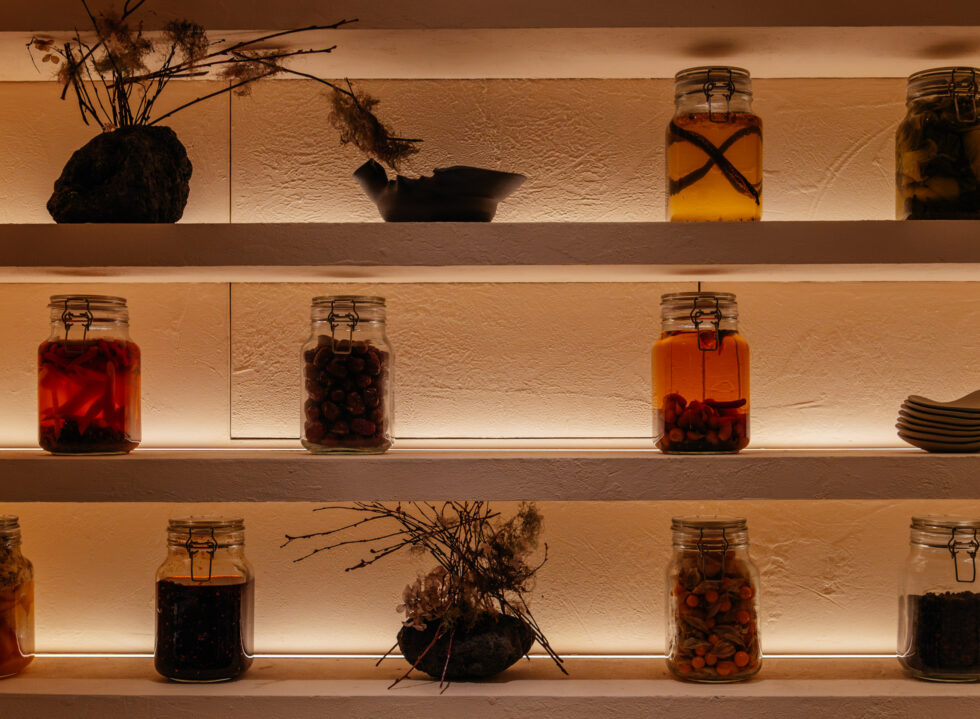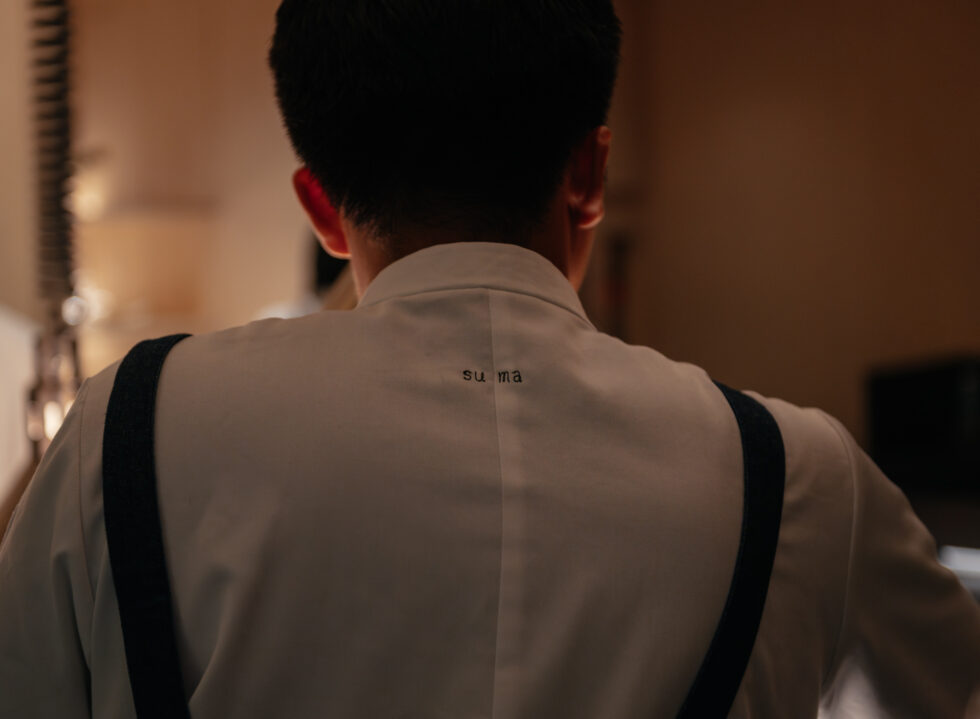It says a lot about the confidence of a restaurant to willingly plant itself in a seedy spot in the Blok M area, where at night, streetlights seem to be a thing of luxury and streetwalkers collectively line the sidewalk like an edgy fashion presentation. Amidst all that, there is Suma beckoning gently with a soft glow emanating from its minimalist architecture—an uncorrupted bloom in the unlikeliest habitat.
The new darling in town is headed by chef Rachel Tjahja along with pastry chef Ryan Kim, and hones in on the interpretation and reinterpretation of East Asian cuisine. Before their time at Suma, both Rachel and Ryan were acquaintances at Le Cordon Bleu in Sydney, and have each established their businesses; Rachel founded the MEDJA by All Seasons Caterers, a private dining and home delivery experience, while Ryan started a dessert cafe Fragments, which he runs with his wife.
It is of course not a requisite to be familiar with both Rachel and Ryan’s achievements in order to enjoy your time at Suma. It will be revealed eventually as the duo dug into their backgrounds (Rachel and Ryan are Chinese-Indonesian and South Korean respectively) and strung them together into a story narrated through the seven-course tasting menu.
At Suma, expectations are subverted with clever combinations of seemingly simple and unostentatious East Asian dishes with luxury ingredients. The starting course Treasure Box, at a glance, features a bed of Oscietra caviar (roe of Russian Sturgeon) and ensui uni, dotted with wasabi flowers. Served in a caviar box with a mother-of-pearl spoon, diners will soon find silky cauliflower chawanmushi hiding underneath at the first spoonful.
Similarly for Ezo Awabi, the prominent hand-made gnocchi plays a supporting role to the ezo abalone. The course is prepared with béchamel sauce incorporated with abalone innards, comparable to how abalone porridge is usually prepared in South Korea by making use of the innards to give it a briny flavour and a distinctly green hue.
Come dessert, the South Korean influence is more apparent. The refreshing Omija is a poetic take on the schisandra, or the “five-flavour berry”, with bright red omija jelly sitting on top of crushed ice and garnished with pressed pear and pine nuts. It is beautiful to look at (it’s hard to resist the urge to take a photo) and to eat. While Nurungji is an impressive deconstructed take on scorched rice, where the nurungji brulee and ice cream are housed within the yuzu meringue with sea salt mousse on the side, sprinkled with nurungji powder.
Rachel and Ryan played to each other’s strengths and instincts and preferred to let the food do all the talking, opting to dedicate their time assembling the perfect plate over at the open kitchen counter at the end of the dining room. And when they do, it’s never to give a long-winded explanation about their creations. For example, Ryan appeared before the start of the course to present a surprise amuse bouche, while Rachel unassumingly offered to drizzle coffee oil on the syrah au jus during the Smoked Duck course.
At the end of the tasting menu, diners have the option to add on Nasi Goreng “Encore”. The option stemmed from an insecurity of Rachel’s, as patrons would usually grumble about leaving the restaurant hungry and order fast food on their way home.
Prepared in the style of bara chirashi (where leftover sashimi is cut into cubes and served on top of rice), Nasi Goreng “Encore” combines various ingredients (duck meat, caviar and uni) that one had encountered in previous courses, and provides a fiery finish with the chilli oil fried rice; it is further amped up with ikura and generous shavings of truffle. If the seven-course tasting menu is a composed and stimulating contemporary classic concert, then the Nasi Goreng “Encore” is a rousing celebratory after-party. It reinforces the tasting menu experience without taking away from Ryan’s desserts.
This added capacity to subvert and excite is also the reason why Suma is already garnering attention and has become the talk of the town since its opening. And when one does come across a social media post or conversation about Suma, it is almost always about the food—a refreshing change of scenery in a time when the status of a chef is usually employed to justify the stature of a restaurant. Here at Suma, above all, the food takes the centre stage. A clear hallmark of what a compelling restaurant is made of.

















